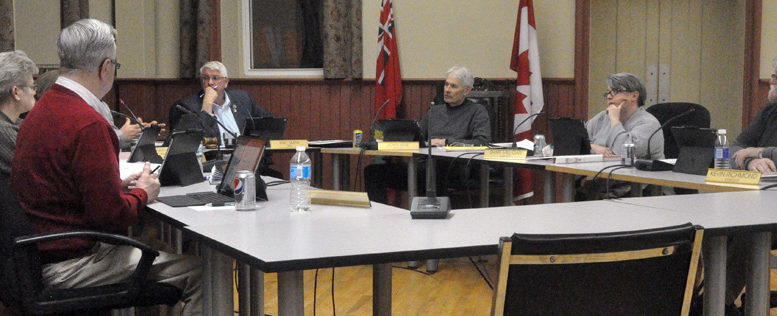Adam Bramburger
Beaver Staff
As Stone Mills Township councillors formally gave first reading to their 2019 budget Monday evening, they were staring at 4.14-per-cent decrease in tax rates compared to last year.
Treasurer Christina Beaushaw noted the second draft of the budget call for an increase in spending of about $70,000. That levy will be funded through assessment growth, however. Last year, Stone Mills had record building permit activity with 30 new home and a duplex contributing to 133 permits worth $14,167,600. That translated into new revenue of $142,140. The municipality will also benefit from another year of the four-year phase in for market value assessment.
“The rate is going down and we’re raising more money through actual growth, building permits, property improvements, new houses or if the cost of a home has risen in value,” Beaushaw said.
Deputy reeve John Wise said what most people want to know from the numbers is the impact on their own tax bills. He said for every $100,000 in assessment people will pay $27 less in taxes at the Stone Mills level if the budget remains unchanged. Whether that translates to higher or lower taxes will depend on possible changes in assessment of property values.
From the first draft of the budget, council and staff saved $33,145 from initial estimates.
In the budget, there is a provision to ensure the township’s 36 employees, including councillors, are paid at least the median rate for their positions among 13 similarly sized municipalities. The impact of that is $101,000.
The township received confirmation from the Province that it will receive a $113,170 increase in transfers from the Ontario Municipal Partnership Fund over last year. Staff has recommended that half of that money be put into a reserve to counter a potential funding loss in future years.
Property maintenance and acquisition repayment fees associated with the anticipated purchase of the Yarker Family School for ongoing use as a library and child services hub will also add $22,750 in spending.
With Beaushaw’s report on the table for consideration, councillor Kevin Richmond asked about whether staff had taken any action following council discussions to put funds aside for road improvements in Newburgh.
Wenda Lalande agreed that if funding wasn’t allocated for the project this year, at some point council would have to plan for upgrades.
“We all know how bad those streets are,” she said.
Doug Davison said he’d object to council dedicating money for specific streets without following its roads plan.
“We have a 10-year roads priority plan that has been in place for years and years and years. Roads are prioritized as to needs. I’m not saying those roads aren’t bad — I wouldn’t want anyone to run with that — but we do have a plan in place and we’ve got to follow the plan we’ve got.”
While Lalande said two streets in Newburgh are on the plan, Davison said there may be other roads and bridges considered a higher priority by staff for capital dollars.
Chief administrative officer Bryan Brooks told council that a majority of major roads works are done through withdrawal from reserves. Given two councillors had expressed interest in setting money aside for road work, he recommended council discuss whether it wants to make a contribution a roads reserve this year.
“We need to have council input on what that number would be so we can decide what to add to the budget,” he said. “We hope it would come forward as to what a comfortable threshold is. We’d put the direction back into council’ s hands. If there’s a desire to continue to invest more into reserves and there’s an opportunity to increase what is requested here this evening, we’ll ask for that direction to come at the next meeting. If we invest in our reserve for roads, that will come at a cost unless something is taken out as part of that review.”
Currently, public works manager Jeff Thompson said that reserve is sitting at a healthy position with close to $1.2 million in it, due to a busy year of County roads projects township crews completed. A year ago, that fund sat at just over $500,000. Asked by Wise what would be an ideal level, Thompson said staff hopes to see the reserve high enough that it can cover the township’s third of a capital project funded by federal and provincial governments.
The improvements in Newburgh, he estimated, would be worth close to $1.5 million in total.
Overall, Brooks said management viewed the forecast as it stands as an “aggressive budget with low impact to taxpayers.”
By having a first reading, he said council can debate possible amendments on the record and place the budget document into the public realm for feedback. He said his hope would be to see a second reading come later this month approval, potentially, April 1.
Davison requested and was assured by fellow councillors a chance for a line-by-line council review before third reading.

